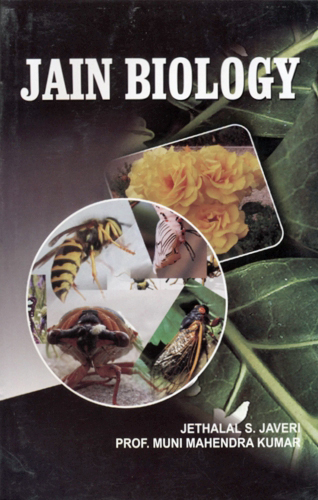According to Jains, every living organism is an organic unity of two distinct entities - A non-material conscious principle called soul and the material or physical body animated by the soul. While the soul is consciousness (cetanā), non-corporeal (amūrta) and imperceptive to senses (arūpi), the body, by itself, is devoid of consciousness (acetana), corporeal (mūrta) and perceptible to senses (rūpi), because it is made up of molecules of matter. Again according to Jains, there is not one but two different bodies. The gross or physical body that we actually perceive is constituted by ordinary matter, nourished by matter ingested in the form of food. It is changing every moment, degenerates with ageing and is given up by the soul after a certain period of time, i.e. at the end of the lifespan. The soul itself, being eternal and indestructible, transmigrates to begin another life.
Besides this gross body there is for every soul a subtle body which is called kārmaṇa śarīra. This body is also constituted by molecules of matter which are quite different from ordinary organic or inorganic matter. They are so much more subtle that they are massless. This subtle body cannot be given up but remains as an inalienable appendage of the soul during its transmigration and metempsychosis. This is transcended only when the soul attains disembodied emancipation which is its pure and perfect state. But in the meantime in its mundane state the soul undergoes metempsychosis from one species of organism to another. And the birth and rebirth of an individual soul in a particular species at a particular time and in a particular place is neither arbitrary nor accidental but the very precise result of the individual's karman which again is the result of its actions in the past life or lives.
In the scriptures this is asserted with great emphasis. Thus in Sūtrakṛtāṅga Sūtra we come across the terms, 'Kammovaga' [1], and 'Kammcmiyaneṇaṃ',[2] which respectively means 'under the influence of karman' and 'because of the karman'. These are expounded as under: the birth, life-span and activities of each and every living organism are the result of the fruition of its own karman. e.g. a plant comes into existence because the conscious principle of the plant, due to the rise and fruition of specific sub-species of the body-building (nāma) karman and lifespan determining (āyuṣya) karman provide the necessary impetus for its metempsychosis as a plant in a particular place, i.e., in a particular soil. Fruition of karman is the causal force which guides and brings about as its effect the existence of the plant. In short, the species, the place or location and time are all determined by karman. Nidāna in the second term means causal potency. While the conscious principle of the plant is eternal and uncreated, the body of the plant comes into existence because of the karman associated with that soul in the form of a kārmaṇa śarīra. It is this subtle body—kārmaṇa śarīra—which is the causal force for producing the gross physical body which is seen as a plant or an organ of a plant.
In Biology, seed is the fertilized and ripened ovule of flowering plants, containing embryo capable of developing into a plant by germination. Seed, like other parts of the plant, is an animate or living organism. According to Jains, the process of germination proceeds because of the kārmaṇa śarīra of the soul in the seed. This is indicated by the terms, ahābieṇaṃ, ahāvagāseṇa, etc..[3] The souls which on account of their karman are to be born as trees may be embodied in the seed or in earth and thence they transmigrate (impelled by their karman) to the seed which brings forth the trees.
Sūyagaḍo Vol. 2, Ch. 3 Sūtra 2 P. 183—tesia ca ṇaṃ ahabieṇaṃ ahāvāgaseṇaṃ ihegahiyā satta puḍhavijoṇiyā puḍhavisaṃbhavā puḍhavikassa, tajjoṇiyā tassaṃbhavā tavvakkama kammovaga kamaṇiyaṇeṇaṃ tathāvakkama nāṇāvihajoṇiyasu puḍhavisu rukkhltāe viuttamti.
According to the (kind of) seed and place (of growth) of these plants, some organisms—born in earth, originated in earth and grown in earth, having in it their birth, origin, and growth, being impelled by their karman and coming forth in it on account of their karman, growing there in particles of earth, the origin of various things—come forth as trees.
 Jethalal S. Zaveri
Jethalal S. Zaveri
 Prof. Muni Mahendra Kumar
Prof. Muni Mahendra Kumar

